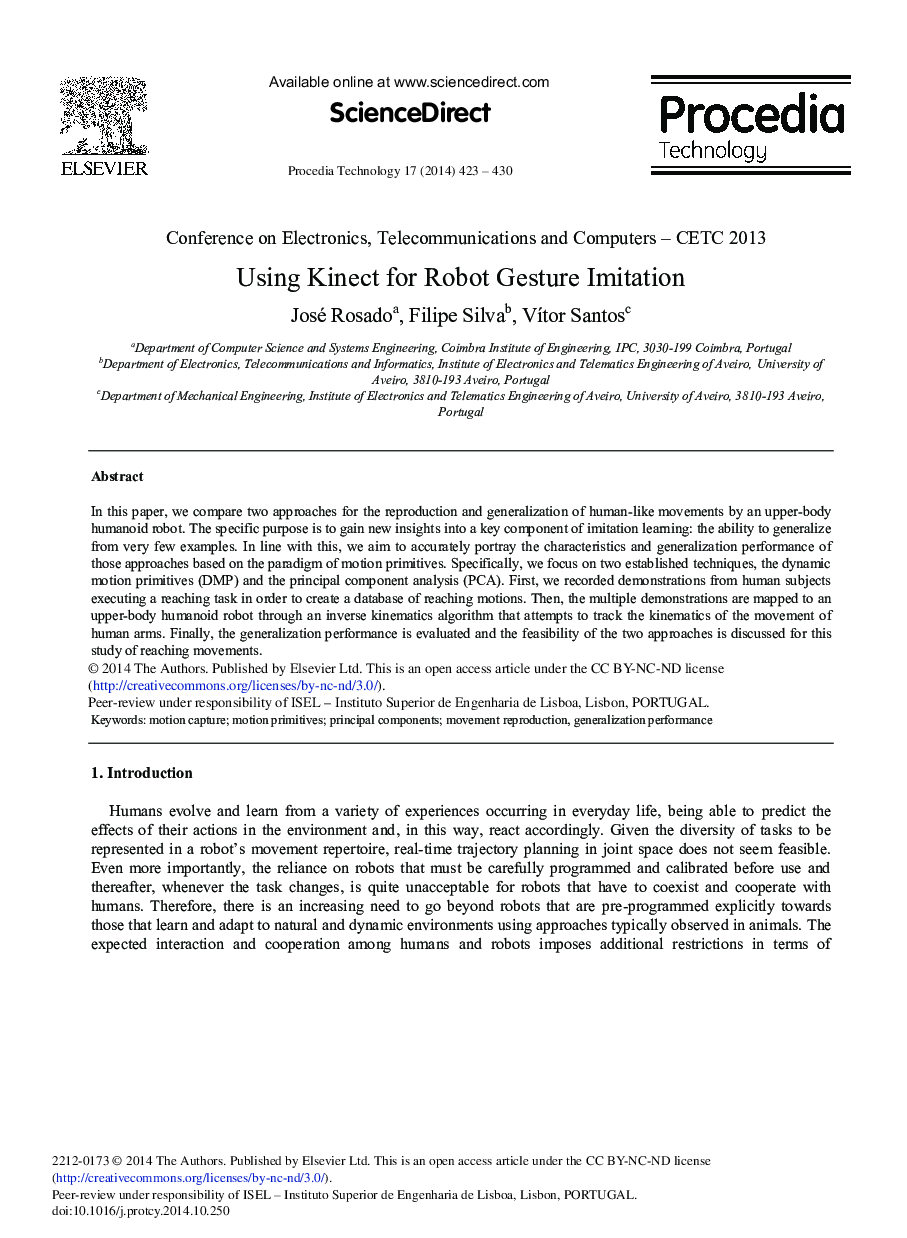| Article ID | Journal | Published Year | Pages | File Type |
|---|---|---|---|---|
| 492719 | Procedia Technology | 2014 | 8 Pages |
In this paper, we compare two approaches for the reproduction and generalization of human-like movements by an upper-body humanoid robot. The specific purpose is to gain new insights into a key component of imitation learning: the ability to generalize from very few examples. In line with this, we aim to accurately portray the characteristics and generalization performance of those approaches based on the paradigm of motion primitives. Specifically, we focus on two established techniques, the dynamic motion primitives (DMP) and the principal component analysis (PCA). First, we recorded demonstrations from human subjects executing a reaching task in order to create a database of reaching motions. Then, the multiple demonstrations are mapped to an upper-body humanoid robot through an inverse kinematics algorithm that attempts to track the kinematics of the movement of human arms. Finally, the generalization performance is evaluated and the feasibility of the two approaches is discussed for this study of reaching movements.
